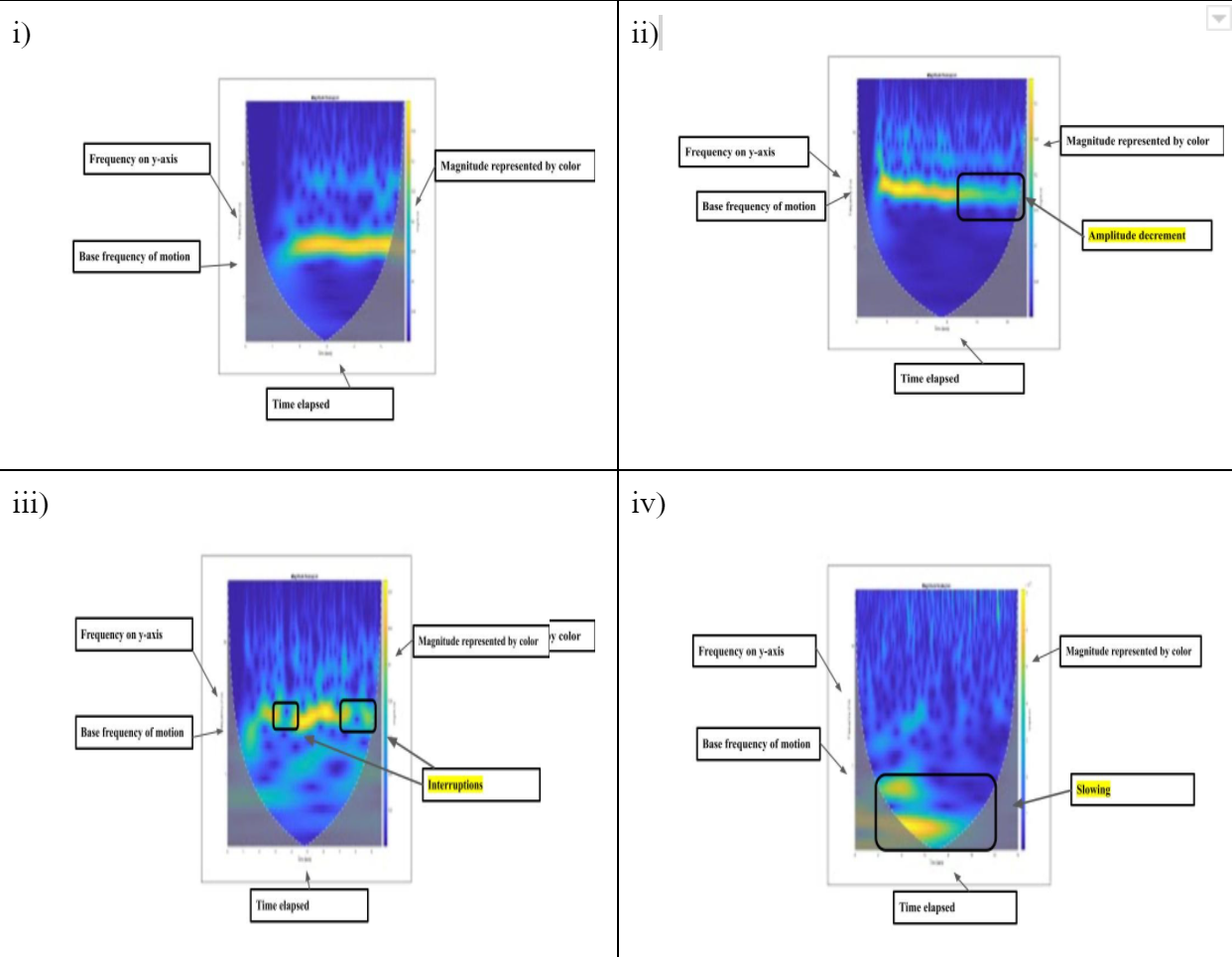Category: Rating Scales
Objective: We sought to develop a protocol to utilize continuous wavelet transforms (CWTs) to rate the severity of movements to obtain optimal classifications of PD.
Background: Routine clinical and research assessments of persons with potential Parkinson’s Disease (PD) involves the use of visual observation for structured review. Visual observation of structured examinations introduces inaccuracies, motivating the need to obtain precise measurements with instrumentation.
Method:
We expressed CWTs of repetitive movements (finger tapping, hand motion, leg agility, pronation/supination, toe tapping) for participants with PD as panels (Figure) for rating by visual inspection. Trained raters were instructed to check a box for an overall rating of
0 normal
1 minimal
2 mild
3 moderate
4 worse
For individual abnormalities
a interruptions
b slowing
c decreased amplitudes
The representations of the CWTs of a single extremity without identification of laterality (left, right) were presented as panels to be scored by trained raters. Each panel contained six images corresponding to the x, y, and z axes of the positions of the accelerometers on the finger and wrist for the upper extremity or the toe and ankle for the lower extremity.
Results: Raters classified transforms by scoring three particular abnormalities in the CWTs. Interruptions were identified on the CWTs as breaks in continuous horizontal segments of line; slowing was demonstrated by a negative sloping line; amplitude decrements were evident while examining the warmth of color (yellow representing the greatest amplitude). Therefore, lines of diminishing warmth from left to right were deemed to show decreasing amplitude.
i) 0 (no amplitude decrements, slowing, or interruptions seen)
ii) 1 (amplitude decrement seen by decrease in warmth of color)
iii) 2 (3-5 interruptions seen by halts in CWT)
iv) 3 (moderate slowing seen by negative sloping line)
Conclusion: A methodology for scoring CWTs of accelerometers on the extremities by a team of trained raters has generated a valuable dataset (Zieglelman, et al., 2020) for analysis and interpretation.
References: Ziegelman L, et al., Mendeley Data. V8. 2020. https://doi.org/10.17632/4dp4v7968z.8
To cite this abstract in AMA style:
T. Kosuri, J. Brasic. Continuous wavelet transforms to improve the accuracy of motor assessments of Parkinson’s disease [abstract]. Mov Disord. 2022; 37 (suppl 2). https://www.mdsabstracts.org/abstract/continuous-wavelet-transforms-to-improve-the-accuracy-of-motor-assessments-of-parkinsons-disease/. Accessed December 25, 2025.« Back to 2022 International Congress
MDS Abstracts - https://www.mdsabstracts.org/abstract/continuous-wavelet-transforms-to-improve-the-accuracy-of-motor-assessments-of-parkinsons-disease/

